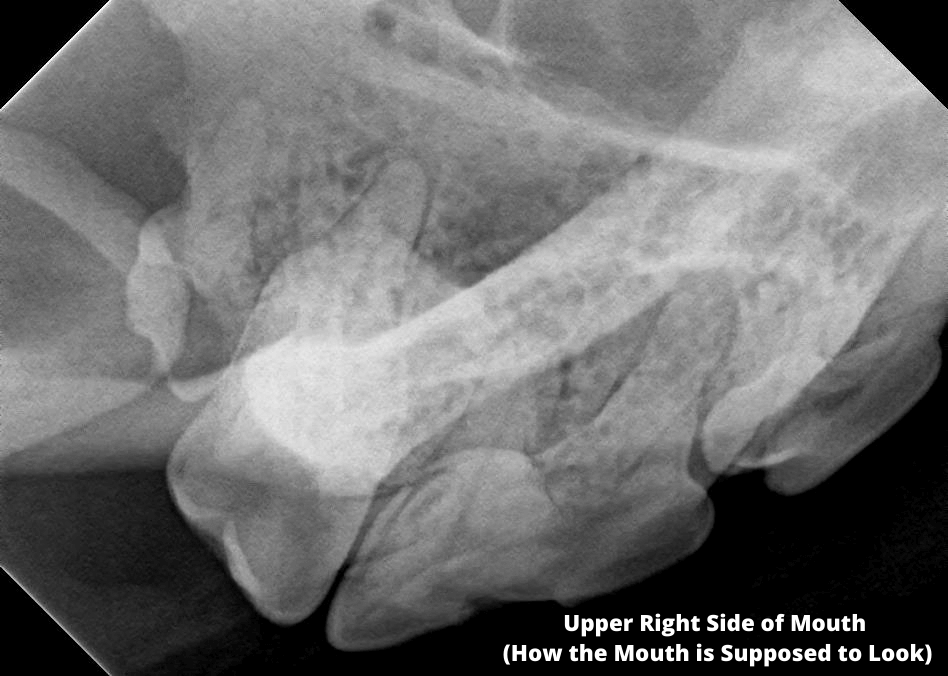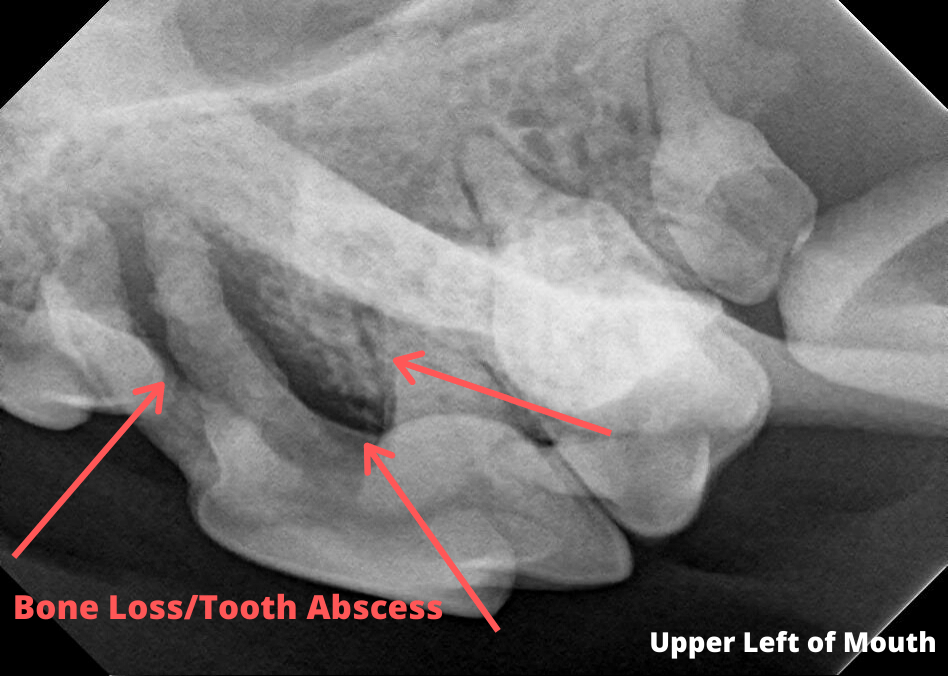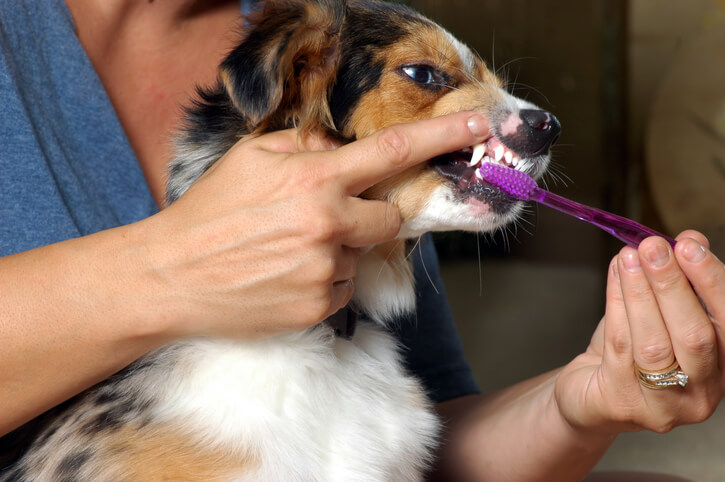By Dr. Heather Kovac
The Patient
Rigley, a 10 year old male Pug/Beagle mix, presented to me for having a swollen face.
The Case
On presentation, there was a soft, non-painful swelling just below his left eye on his left cheek. There was no bite wound or bee stinger present and he did not seem to be in any distress. Upon oral examination, there was moderate tartar on the teeth on the right side and more severe tartar and even some bleeding gums along the left upper side. He did seem painful when I gently pressed along the upper jaw on the left side above the teeth. Rigley had the classic presentation of a tooth root abscess.


The Treatment Plan
Dogs (and cats) are notorious at masking oral pain. Where we would be crying and complaining that our teeth hurt, dogs seem to just accept that this is how life is. Rigley was scheduled to have a complete oral health assessment and treatment (COHAT) the following Monday. He was prescribed an oral antibiotic and pain reliever and a preanesthetic blood sample was taken and sent to the laboratory. The owners were also instructed to feed a soft diet. On the day of the procedure, Rigley was prepped for surgery. He had an IV (intravenous) catheter placed, received IV analgesics and general anesthesia. Full mouth dental radiographs (x-rays) are taken on all our dentistry patients which revealed not one, but two tooth root abscesses on the upper left side. When a tooth is abscessed, there is loss of bone around the tip of the root which is caused by an infection in the pulp (or center) of the tooth. An abscess can either be due to a fracture of the tooth from trauma or abnormal wear, or from severe periodontal disease which is when tartar and bacteria get below the gumline and erode the bone. The most common reason is when a dog chews on something too hard, like a rock, bone, or antler that then breaks the upper cheek tooth in a vertical, or slab, fracture. This exposes the pulp (nerve and blood supply) of the tooth to the normal oral bacteria that can invade and lead to an infection. If left untreated, dogs will get a swelling below the eye that can even rupture and ooze pus (fun times)! Obviously, this is painful to our patients. Rigley had both of the abscessed teeth surgically extracted and all the other teeth were cleaned and polished. Once the gum heals, which only takes 7 or so days, he is going to feel so much better! Rigley did well for his procedure and was discharged later that day. His owners were instructed to continue the pain medication and the soft diet for another 7 days. They were also encouraged to begin brushing his teeth on a regular basis (at least 3 times a week) to help prevent future dental disease.

The Takeaway
Regular oral hygiene is key in preventing oral disease in our pets, just like for ourselves. Regular brushing of your pet's teeth can help keep their teeth looking and feeling great. Please see our instructional videos on how to brush your dog's teeth here and how to brush your cat's teeth here.
If you need to schedule your pet for a dental cleaning or for their next exam, please contact us today.
The Drake Center for Veterinary Care is an AAHA-accredited animal hospital located in Encinitas, CA. The Drake Center loves being a source of information for all pet owners across the country however if you have any questions regarding pet care and do not live in Encinitas, CA or surrounding cities, we encourage you to contact your local veterinarian.

